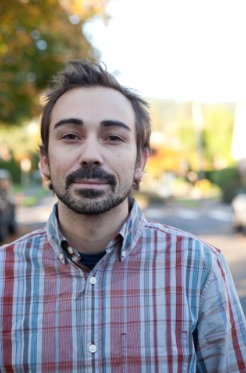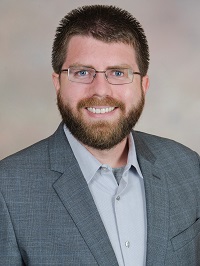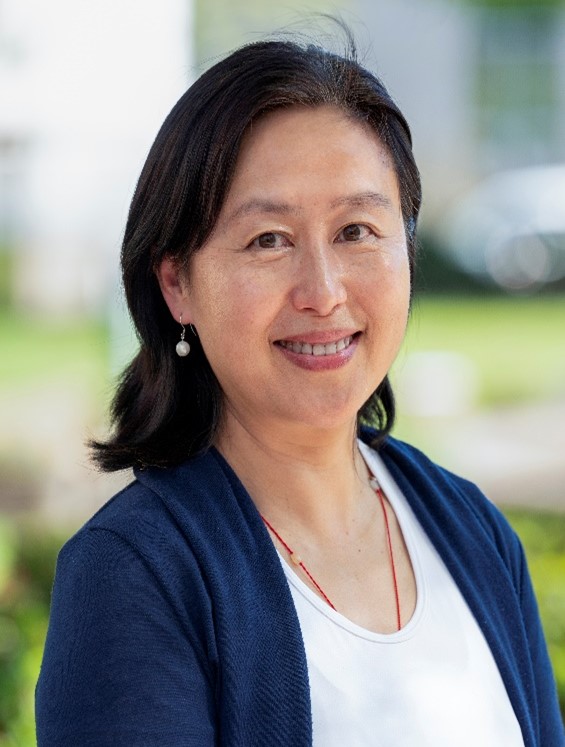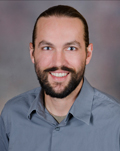Academic Mentors
Academic mentors are a critical resource for our students. Academic Mentors contribute formally and informally to graduate student training. They advise first year students on their Fall core courses, rotation lab choices and upon transitioning into their chosen research lab. They develop an individualized educational plan in conjunction with the student and their Research Mentor. They track student progress through individual meetings with the students and review of DAC reports.
Michael S. Cohen, Ph.D

The overall interests of my lab are in two main areas: 1. uncovering new roles for nicotinamide adenine dinucleotide (NAD+) regulation in cells and 2. elucidating the function of post-translational modifications (PTMs) by enzymes that use NAD+ as a substrate. A current focus in on the evolutionarily conserved PTM known as ADP-ribosylation. We seek to understand the impact ADP-ribosylation on cell function as a strategy for therapeutic development. ADP-ribosylation is catalyzed by a family of enzymes known as poly-ADP-ribose polymerases (PARPs, 17 in humans; also referred to as ARTDs), and involves the transfer of ADP-ribose from NAD+ to amino acids in target proteins. Despite being called PARPs, most of the family members catalyze mono-ADP-ribosylation (MARylation) and not poly-ADP-ribosylation (PARylation). Over the past eight years we have developed novel chemical tools and approaches, including orthogonal NAD+ analogue-enzyme pairs and selective PARP inhibitors, which have provided insights into the function of PARP-mediated MARylation in ways not attainable with conventional methods. Our studies have kindled a number of collaborations with other researchers in the PARP field that are using our selective PARP inhibitors and knowledge gained from our chemical genetic studies to understand how MARylation regulates protein function in cells.
I am deeply passionate about mentoring and training graduate students, both in the lab and in the classroom. Graduate students are the catalyst for academic research and I am committed to training the next generation of PhD scientists. I have been involved in all aspects of graduate student education: from teaching in graduate courses to mentoring graduate students in my lab and serving on dissertation advisory committees. I am enthusiastic about the opportunity to contribute more formally to graduate student training as an Academic Mentor. One of my main priorities will be to make sure students feel supported and can achieve their educational and career goals.
Jonathan Pruneda, Ph.D

Dr. Pruneda is an Associate Professor in the Department of Molecular Microbiology and Immunology at OHSU. After growing up in the Pacific Northwest and studying at the University of Washington for his PhD, Dr. Pruneda moved to the MRC Laboratory of Molecular Biology in Cambridge, UK for postdoctoral training. In 2018, he began a research program at OHSU centered around how ubiquitin and related post-translational signals are dysregulated in genetic and infectious disease. His primary research focus is to understand how bacteria manipulate the host ubiquitin system in order to evade immune detection and hijack other cellular processes during infection. This interest has also expanded to other pathologies arising from the dysregulation of ubiquitin signaling, including the rare pediatric disease UBA5 that causes severe epileptic encephalopathy. The lab uses protein biochemistry, structural biology, and cell biology approaches to study these and other ubiquitin-related diseases.
Dr. Pruneda is committed to maintaining a supportive training environment in the lab and at OHSU. He has received formal mentorship training, including the EMBO Laboratory Management Course, the OHSU Mentorship Academy, and other focused workshops. He is currently a facilitator for the OHSU Mentorship Academy series, where he trains other faculty in promoting professional development and work-life integration. He is especially devoted to facilitating a successful transition into graduate training. Along these lines, he co-developed a graduate student course entitled “Scientific Logic”, which provides incoming students with the skills necessary to effectively research, select, evaluate, and present scientific journal articles. He is excited to further support incoming graduate students by serving as an Academic Mentor.
Show-Ling Shyng, Ph.D

Dr. Show-Ling Shyng is a Professor in the Department of Chemical Physiology and Biochemistry at OHSU. After completing undergraduate studies in Taiwan, she moved to the US to pursue a PhD in cellular and molecular neuroscience at Cornell University. During my postdoctoral training at Washington University in St. Louis, she became fascinated with a class of potassium channels called KATP channels, which have remained the focus of her lab since she joined OHSU in 1999. Her lab uses a multidisciplinary approach spanning biochemistry, biophysics, cell biology, molecular biology, genetics, and structural biology to study KATP channel regulation in health and disease.
Dr. Shyng is passionate about training and mentoring the next generation of scientists in a rigorous and supportive scientific research environment that values integrity, diversity, equity and inclusion. She tailors hermentoring based on the strengths, weaknesses, and career goals of each student, and ensure each student receives sufficient individual attention. Seeing students succeed in their scientific and personal pursuits is the most rewarding part of her job. Aside from mentoring in her own lab, she has been actively involved in teaching and mentoring throughout OHSU. Show-Ling is excited to serve as an academic mentor of PBMS students and be part of their PhD journeys.
Jane Nie, M.D, Ph.D

Research Overview:
Zhenying (Jane) Nie's research group investigates how obesity increases the risk and severity of asthma, with the ultimate goal of identifying new therapeutic strategies and prevention methods. Their primary focus is to uncover the molecular mechanisms linking obesity to asthma, particularly how hyperinsulinemia contributes to airway neural dysfunction, inflammation, and immune response. A significant aspect of their work also examines the impact of maternal obesity on offspring asthma. Using a mouse model of diet-induced maternal obesity, we have found that offspring exhibit metabolic abnormalities and increased airway hyperresponsiveness. These findings align with the Developmental Origins of Health and Disease (DOHa) theory, which suggests that early-life environmental factors can "program" long-term health outcomes.
Specifically, they are using state-of-the-art techniques to investigate:
- The impact of hyperinsulinemia on the structure and function of airway nerves.
- The role of insulin receptors on airway nerves and the signaling pathways through which insulin affects nerve structure, neurotransmitter expression, and function.
- The influence of maternal obesity-induced metabolic disorders on airway hyperresponsiveness in offspring.
Mentorship Philosophy:
Dr. Nie is deeply committed to mentoring graduate students and postdocs in a collaborative and supportive environment. Over the years at OHSU, she has had the privilege of guiding students on research projects, particularly in the lab. Through mentor training workshops, such as Culturally Aware Mentoring, and my ongoing commitment to diversity, equity, and inclusion (DEI), She has have gained valuable insights into the importance of compassionate, culturally sensitive mentoring.
Dr. Nie believes that mentorship rooted in mutual respect, trust, and empathy is essential for student success. Her goal is to help trainees develop both technical expertise and critical thinking skills while fostering their independence and intellectual curiosity. She prioritizes creating an inclusive environment where students are supported in achieving their academic goals. Through personalized guidance, she aims to equip her mentees with the skills they need for success in academia, industry, or beyond.
Tim Nice, Ph.D

Dr. Tim Nice is a Professor of Molecular Microbiology and Immunology at OHSU. The overall goal of research in the Nice Lab is to advance our understanding of the immune response in the intestine, with a particular focus on intestinal epithelial cells (IECs) and the interferon family of cytokines. In the lab, they use mouse models and IEC organoid cultures from mice and humans to study conserved activities of interferon family members and their contributions to immunity and disease. Over the course of the lab's prior studies, they have identified host genes that shape the immune response to viral infection and defined contributions of the bacterial microbiota. Dr. Nice particularly enjoy mentorship of research projects in the lab, where learning through building hypotheses and discussing results is effective and satisfying. He was a fortunate recipient of invaluable mentorship during his training, so he strongly desires to extend similar opportunities to research assistants, interns, graduate students, and postdocs in his lab.
Dr. Nice has had the privilege of working with graduate students through all stages of their PhD studies, from admission to the dissertation defense. The most rewarding parts of his time at OHSU have been fostering the ambitions of recruits, supporting students through the challenges of a dissertation project, and celebrating their successful defense of dissertation work. As a PBMS Academic Mentor, he pledges to guide graduate students in pursuit of their degree, including advice on courses and rotations, choice of a research mentor/lab, and navigation of research milestones. Dr. Nice will continue to advise and support students throughout their time in the program and looks forward to meeting PBMS students each year.